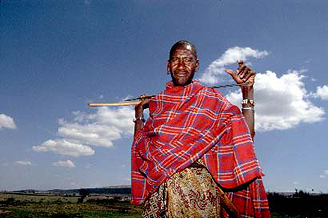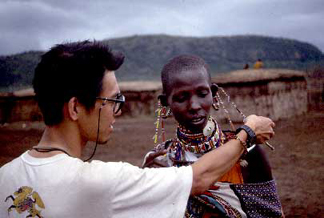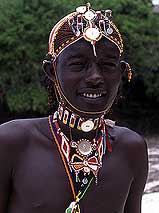|
|
|

|

Every year many tourists come to
Kenya in East Africa for a safari holiday. With a bit of luck,
they can spot a great range of wild animals on Kenya's grasslands.
Today, Kenya has over 50 safari parks and reserves where the
wild animals are protected.
|

Dianne Blell/Still Pictures |
More of the tourists that
come to Kenya are from Britain than from anywhere else.
40% of all the money that comes into Kenya from abroad
comes from tourism.
|
|
|
 The
great numbers of tourists is not good news for all Kenyans.
Many of these protected areas used to be important grazing
lands for the Maasai people. They were thrown off these lands,
often without any compensation. Now they try and make a living
from the poorer quality land they are left with. The
great numbers of tourists is not good news for all Kenyans.
Many of these protected areas used to be important grazing
lands for the Maasai people. They were thrown off these lands,
often without any compensation. Now they try and make a living
from the poorer quality land they are left with.
|

Chris Sattleberger/Panos Pictures |
The Maasai used to be nomadic
, moving their cattle, sheep and
goats across the grasslands in search of fresh pastures
and water holes. They also used to collect wild vegetables,
berries and honey which they need for a healthy diet.
|
|
 P.Moszynski/Panos
Pictures kenya 3
P.Moszynski/Panos
Pictures kenya 3 |
|
Without these
grazing lands, many Maasai can't make enough money from
their animals. Instead, they make decorative jewellery
and cloth to sell to tourists. |
|

|
Some of the men even dress up as warriors and pose for photographs
while others make up songs and dances to entertain the visitors.
For many Maasai, this cheapens their culture that has been part
of Kenya for generations. Harry, imagine if you were asked to
play a game of cricket in the middle of winter for visitors
to Britain to come and watch! |
|
 | 
Fred Hoogervorst/Panos Pictures |
|
 | On
the edge of the Maasai Mara, a huge safari park, five
Maasai men have taken matters into their own hands.
By selling two cows each, they have set up their own
campsite for tourists. They use the profits to support
schools and health clinics, and for digging wells.
|
|
|

|
|
